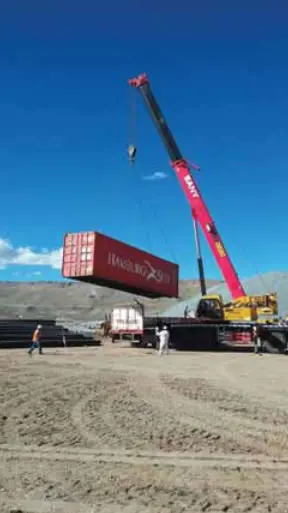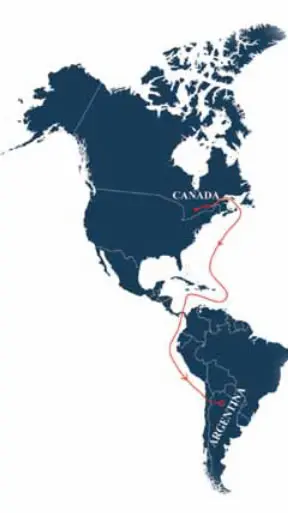St. Lawrence Seaway: Gateway to South America
First published in Dry Cargo International in April 2020, this article shows the incredible logistical work that Triodetic undertakes on many projects.
Doing business between continents is a very common endeavour and has become a necessity for the continued viability of many businesses. We rarely reflect on the huge logistics involved in these cross continent transactions. “At Triodetic we don’t give it a second thought to quote projects in faraway places such as Kuwait or South America.” says Luis Gattorno, V.P., Global Dome Operations.
These transactions, however, involve a great amount of effort and planning on the part of many participants in the process of bringing goods from Canada to other continents.
A great example of such a shipping effort involved a recent project Triodetic completed for the SSR Mining Company, Mina Pirquitas in Argentina. This mine is an open pit silver-lead-zinc facility. The anticipated consolidated production in 2020 is estimated to be six million ounces of silver, 21 million pounds of lead and seven million pounds of zinc.
Triodetic was involved in covering a coarse ore stockpile. During mining operations materials are brought by overland conveyor to the plant and are dropped from a height of 30 metres to form a cone shaped stock pile.
Dropping rock from great heights in a windy environment creates a lot of dust 24 hours a day. A dome-shaped cover was required to contain and manage the dust. The Triodetic dome is 64 metres in diameter and has a height of 27 metres. The main components making up the dome structure are structural tubes and connectors.
The tubes are mechanically joined in the field using connectors to form the dome shape.The dome structure is then covered with pre-curved corrugated metal panels. The entire structure weighs 150 metric tonnes.
All materials were packaged to fit in ten shipping containers of 12 metres in length.The shipping route from the city of Ottawa in Canada to the mine in the Jujuy Province of Argentina covers a distance in excess of 13,000 km.
The journey starts in Ottawa where shipping containers are loaded and travel by land to the Port of Montreal, Canada. In Montreal harbour, the containers are loaded onto the designated ship and travel along the St.Lawrence River for about 1,400km to exit in the Atlantic Ocean.
From there the freight route takes the ship south past Florida into the Caribbean Sea towards the Panama Canal. At the canal, the ship reaches its two-third mark of the journey when it traverses into the Pacific Ocean.
The ten containers holding the dust cover for the Pirquitas mine form part of the one million containers per week that pass through the Panama Canal. Once through the canal, the remaining sea voyage is another 3,400km to the Port of Antofagasta in Chile and then 800km overland to its final destination in the North West of Argentina.
At the mine site, containers are unloaded and installation begins. The assembly process is very fast. The tubular components are mechanically joined using the Triodetic connectors. Each tube has a distinct number and when assembled in the proper sequence the dome shape is achieved.
Once the tubular assembly process has been completed the pre-curved metal decking panels are attached.
The entire assembly can be accomplished while the mine is in operation and materials are being dropped into the dome area.
After a remarkable journey all the way from Canada the ultimate goal of mitigating airborne dust at a mine site in Argentina comes to a successful conclusion.

